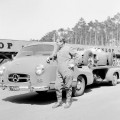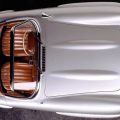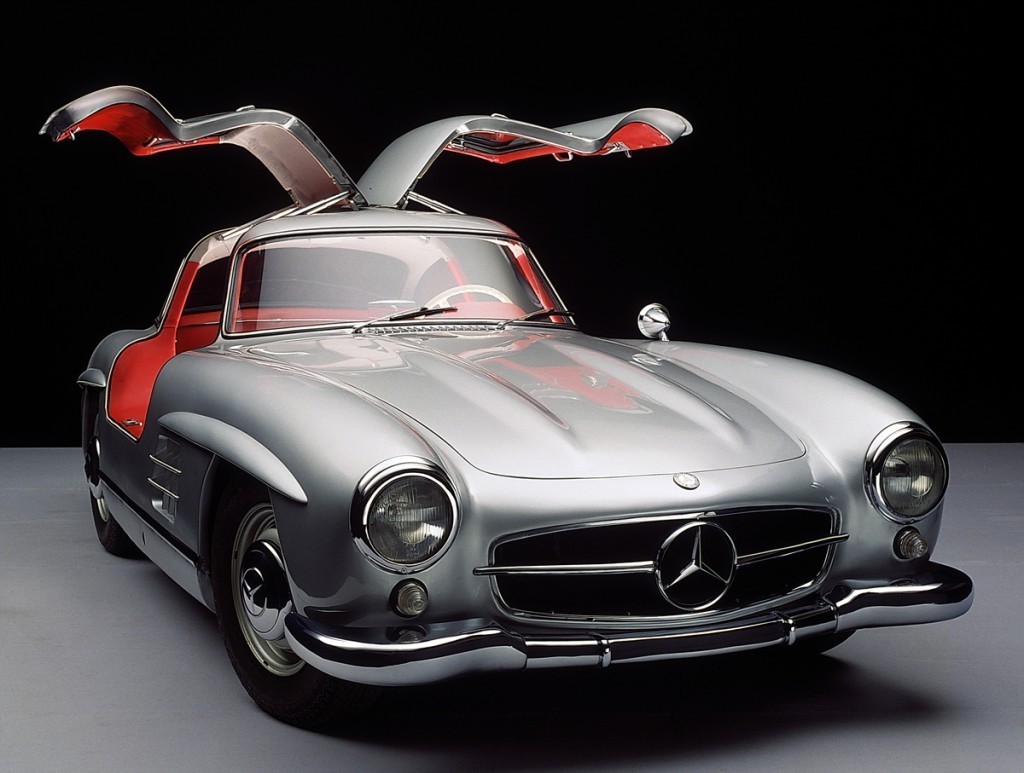
Source: Mercedes-Benz
In the world of classic cars, the Mercedes-Benz 300SL is at the top of the heap. It’s the classic car’s classic car, a bona fide million-dollar dream machine that’s so recognizable that even non-gearheads know it by its gull-wing doors and oversized three-pointed star. Volumes of books have been written about it, Andy Warhol immortalized it on canvas, and it’s been an international object of desire from the minute it began rolling off the assembly lines more than 60 years ago.
Even though the car is practically ancient, it’s still nearly impossible to describe it without using words like “prettiest,” “greatest,” and “best.” But what makes the 300SL truly remarkable is that with all the praise, superlatives, mythologizing, everything — it actually deserves it. There’s no need for qualifiers like “for the time,” or “by 1950s standards” for the 300 SL. It simply is, and there’s never been anything else like it.

Source: Mercedes-Benz
Separated by six decades of automotive advancements, it may be tempting to think of the 300SL as a product of its era. But it’s easy to forget just how prehistoric the automotive world was in 1954, and just how alien the German coupe truly felt. Back then, most Americans were hearing about sports cars for the first time. The Chevy Corvette was in its second year of production, but its future was uncertain due to its high price, poor build quality, and lone engine choice, being a 150-horsepower inline-six mated to a sluggish two-speed automatic transmission.
It would be another year before Chevy finally gave the ‘Vette a V8 and a new lease on life. Ferrari began officially importing cars to America in ’54, and Porsche had sold fewer than 100 cars here. It would be close to a decade before the Mustang, muscle cars, and a host of cheap British roadsters would bring performance to the masses. In these automotive dark ages, the 300SL was a quantum leap forward, and while the car is quintessentially German, it was tailor-made for the American market.
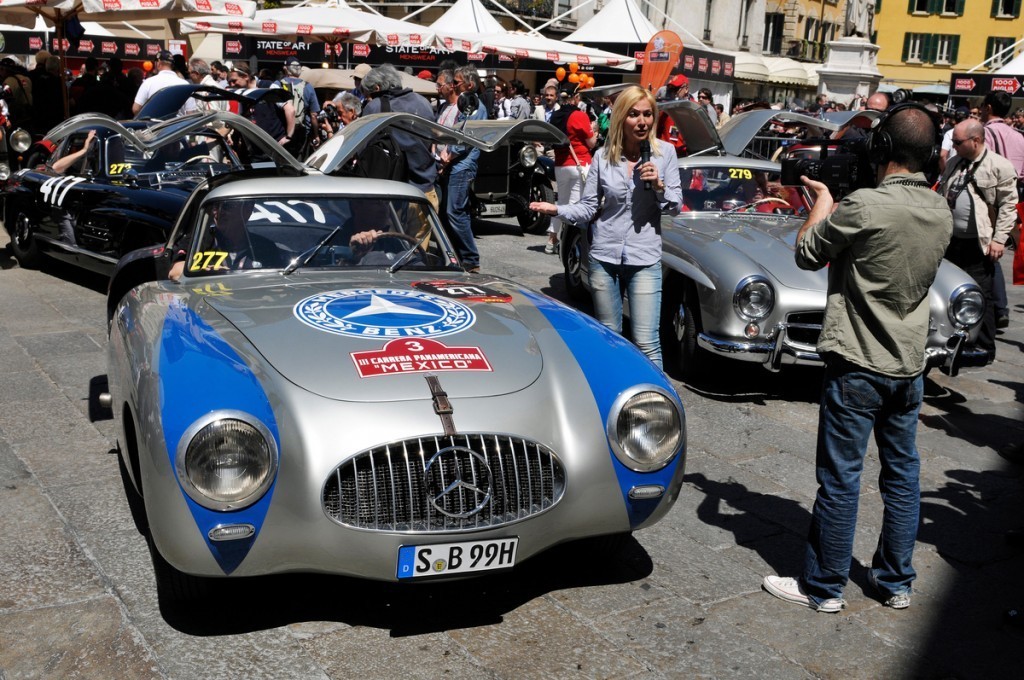
Source: Mercedes-Benz
Still struggling after World War II, Mercedes-Benz returned to racing in 1952 and found success with its aluminum-bodied, gull-wing W194 race cars. Operating out of his Frank Lloyd-Wright-designed showroom on Park Avenue in Manhattan, Mercedes’s U.S. distributor (and also Porsche’s), Max Hoffman, thought a road-going W194 might be just the thing to raise the company’s profile in America and give the brand a much-needed sales boost. Luckily, company management in Stuttgart agreed, and started on a proper road car version in 1952. But instead of diluting the 300SL for the road, Mercedes made it even better.
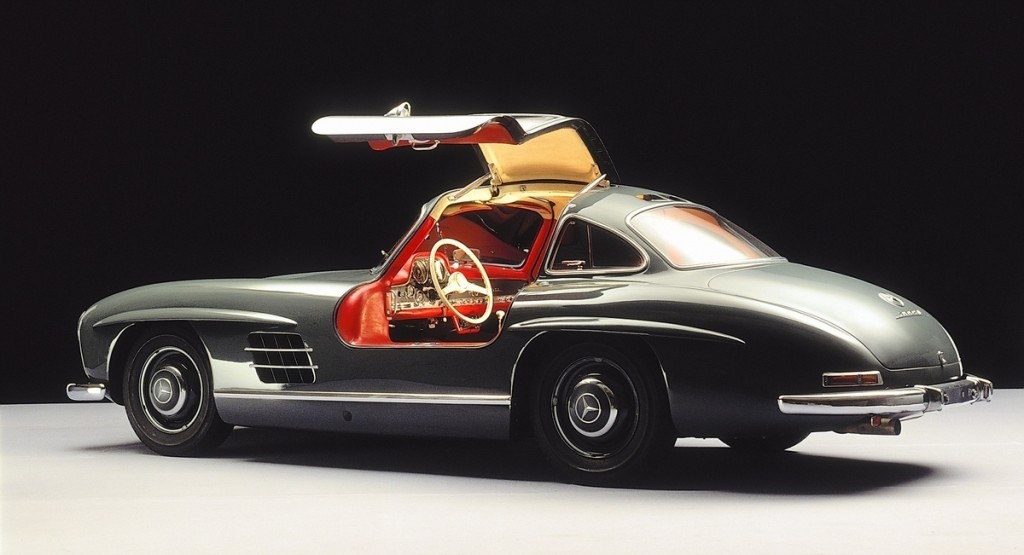
Source: Mercedes-Benz
Under the direction of chief engineer Rudolf Uhlenhaut, Mercedes quickly went to work turning the 300SL into the ultimate grand tourer. Because of the high door sills caused by the car’s aluminum spaceframe, the race car’s gull-wing doors were carried over for the production model.
The body was redesigned, and the road car was actually more aerodynamic than the racer. For ease of entry, the steering hub was hinged, so the driver could fold the steering wheel down for easier entry and exit. The trunk was filled with the spare tire and 34.5-gallon fuel tank (another carryover from the race car), but true to its luxury roots, Mercedes offered bespoke luggage to fit on the rear parcel shelf instead.
Even with the car’s advanced engineering and gorgeous looks, it would’ve been nothing without an engine to match. Luckily, its 3.0-liter inline six didn’t disappoint. Using then-experimental technology from Bosch, it became the world’s first production car with fuel injection, and it helped the 220-horsepower big six rocket the Benz to 160 miles per hour, making it the world’s fastest production car.
In comparison, the Jaguar XK120 (the previous record holder), had a top speed of just over 120 miles per hour. Compared to the streamlined Merc, the XK120 might as well have been a horse and buggy. The Jag was wood, leather, and wire wheels. The Benz was aluminum, lightweight, and gull-winged. In 1954, the future of sports cars had arrived, and it would take Mercedes’s competitors decades to catch up.
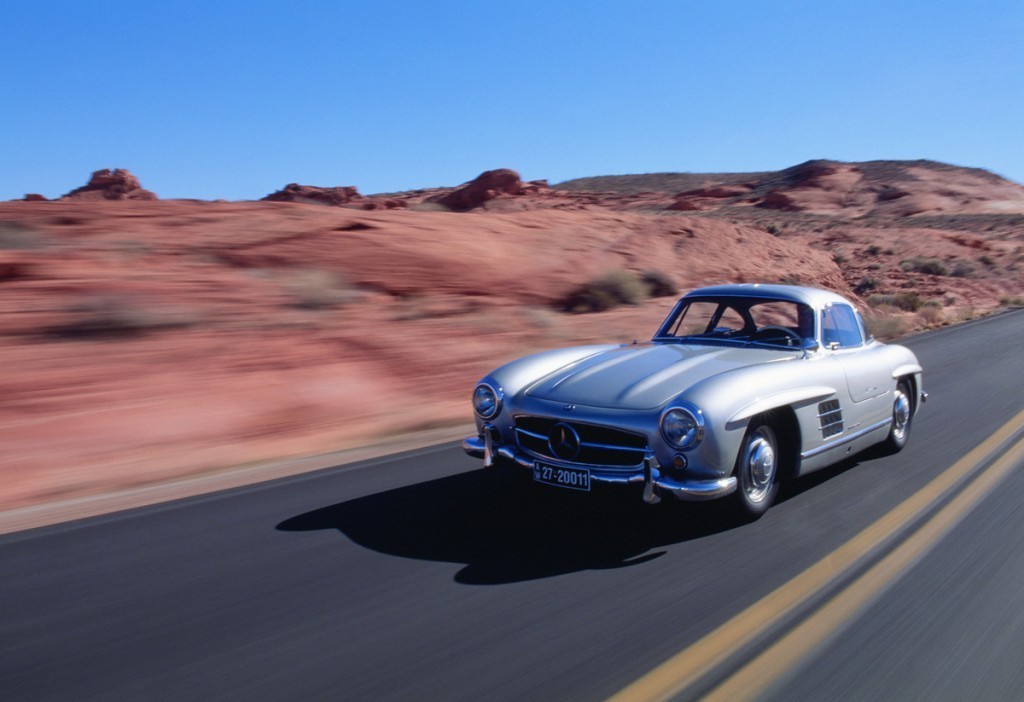
Source: Mercedes-Benz
When Mercedes’s cutting-edge sports car reached American shores, Hoffman was proven right. Between 1954 and 1957, the company built 1,400 gull-wing coupes, and about 80% of them were exported to America. Clark Gable, Gina Lollobrigida, Tony Curtis, and Sophia Loren all bought the cars, instantly making them the ride of choice for the rich and powerful.
The road cars were so much more advanced than the W124 that Mercedes began campaigning 300SLs in races with great success. At $6,820 (or $59,305 today), the car was over three times more expensive than a base-model Chevrolet, making the German GT well out of reach for most Americans, but its gorgeous looks, advanced technology, and popularity with celebrities made it one of the most high-profile and desirable cars of the era.
In many ways, the 300SL is the world’s first supercar. It was blindingly fast, achingly beautiful, technologically advanced, and lusted after the world over. In 1957, the coupe was replaced with a convertible model that lasted until 1963. For 1964, the SL was transformed into an elegant and modern luxury tourer. The racing connection had faded, but the SL-Class has carried on, and today, the car is in its sixth generation.
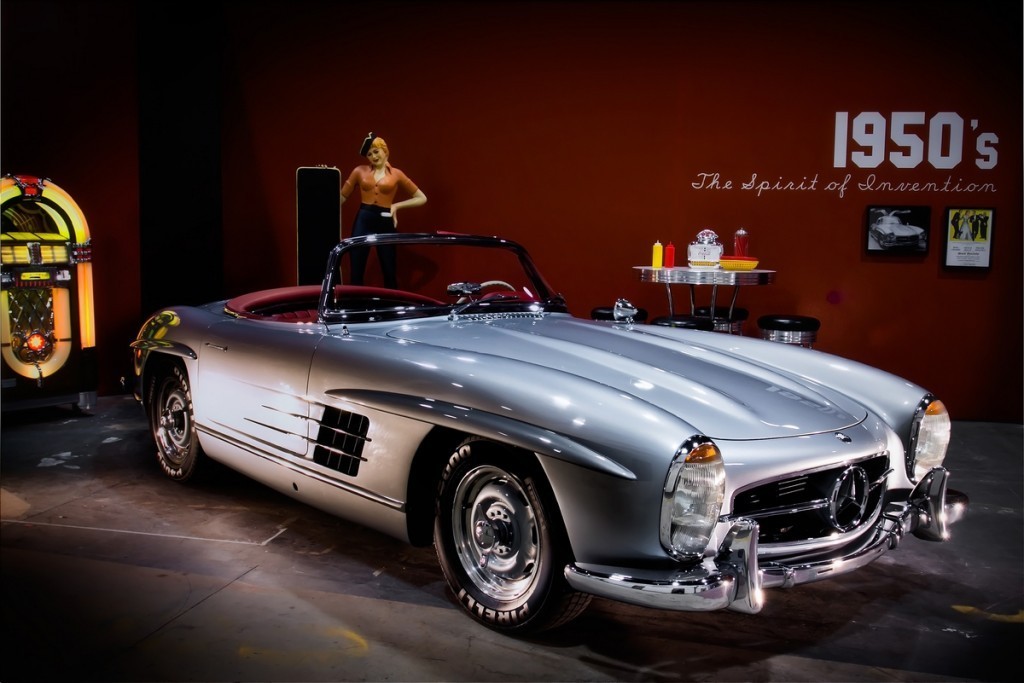
Source: Mercedes-Benz
It would be a stretch to call the current SL-Class a supercar. But improbably, its forbearer, the 300SL, still is. Mercedes’s gull-wing coupe could be the only car in history where time stopped the instant it rolled off the line. It’s a perfect car, and neither time nor technology could have possibly made it better. After six decades, countless words written about it, and all the superlatives, accolades, and millions of dollars spent on it, the 300SL was, is, and will always be simply this: great.

